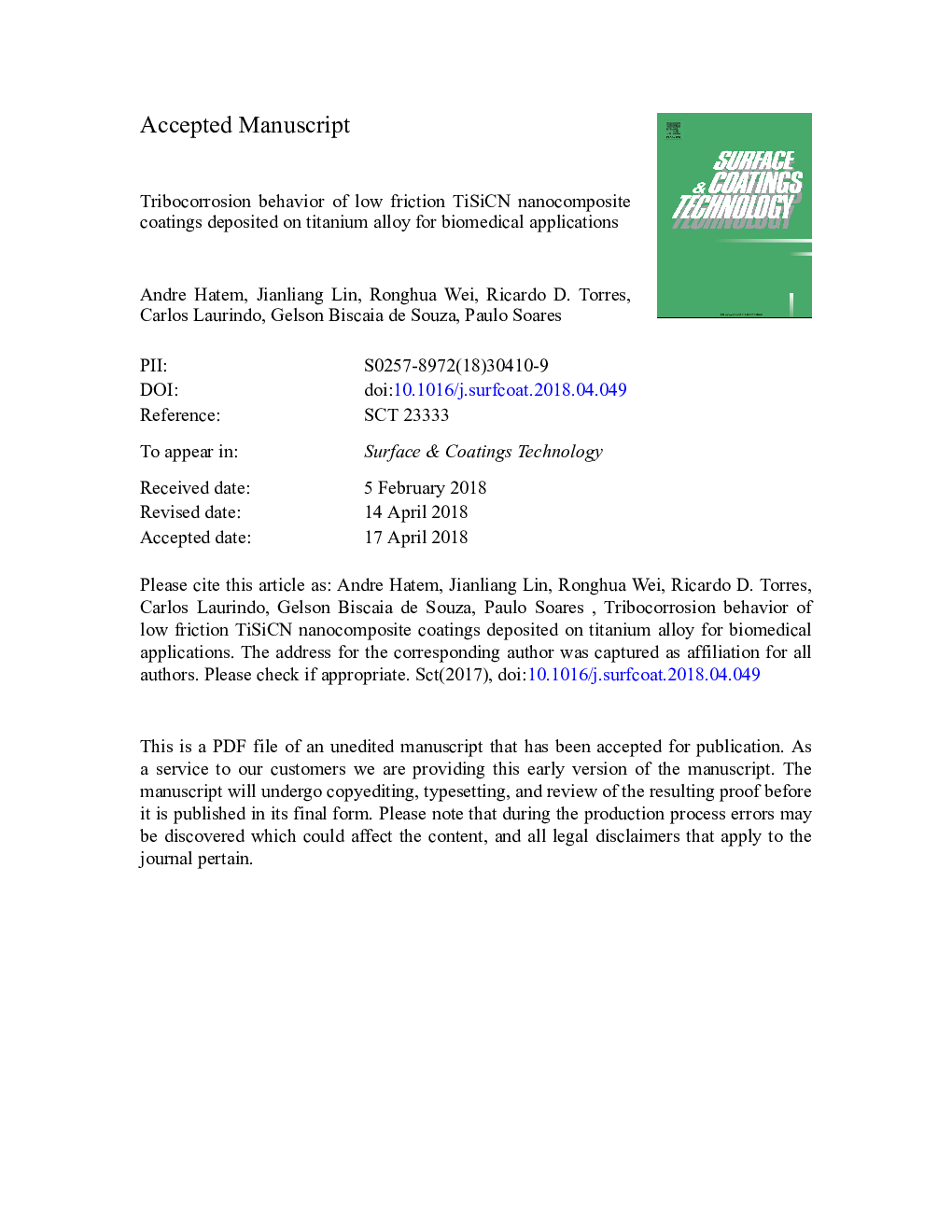| Article ID | Journal | Published Year | Pages | File Type |
|---|---|---|---|---|
| 8023534 | Surface and Coatings Technology | 2018 | 44 Pages |
Abstract
The quaternary Ti-Si-C-N nanocomposite is regarded to be promising one in the biomedical field due to its improved tribocorrosion performance and biocompatibility. The deposition of such material on biomedical components surfaces can extend its lifespan by minimizing wear debris and ion releasing inside the physiological environment. Therefore, this work investigates the tribocorrosion behavior of low friction Ti-Si-C-N nanocomposite coatings applied on the ASTM F136 titanium alloy immersed in a phosphate-buffered solution (PBS). The coatings were obtained by the plasma-enhanced magnetron sputtering (PEMS) technique using an assorted precursor flow range of tetramethylsilane (TMS) and hexamethyldisilazane (HMDSN) liquid along with acetylene (C2H2) gas. Reciprocal sliding tribocorrosion tests were performed under PBS solution on the samples and compared to a Ti-6Al-4V bare alloy sample. The microstructure, morphology, chemical structure, mechanical properties, and adhesion of the coated samples were also evaluated. The results presented an expressive reduction of at least 97% in the wear rate of the low friction Ti-(Si)-C-N nanocomposite coatings compared to the titanium bare alloy sample. The tribocorrosion performance of the coated samples demonstrated a strong correlation within the Silicon and Carbon content presented on coatings chemical compositions. As consequence, the roles of nanocrystallites refinement, the presence of amorphous carbon region and the oxides generation were demonstrated as relevant characteristics to improve the tribocorrosion behavior of Ti-Si-C-N nanocomposite.
Related Topics
Physical Sciences and Engineering
Materials Science
Nanotechnology
Authors
Andre Hatem, Jianliang Lin, Ronghua Wei, Ricardo D. Torres, Carlos Laurindo, Gelson Biscaia de Souza, Paulo Soares,
